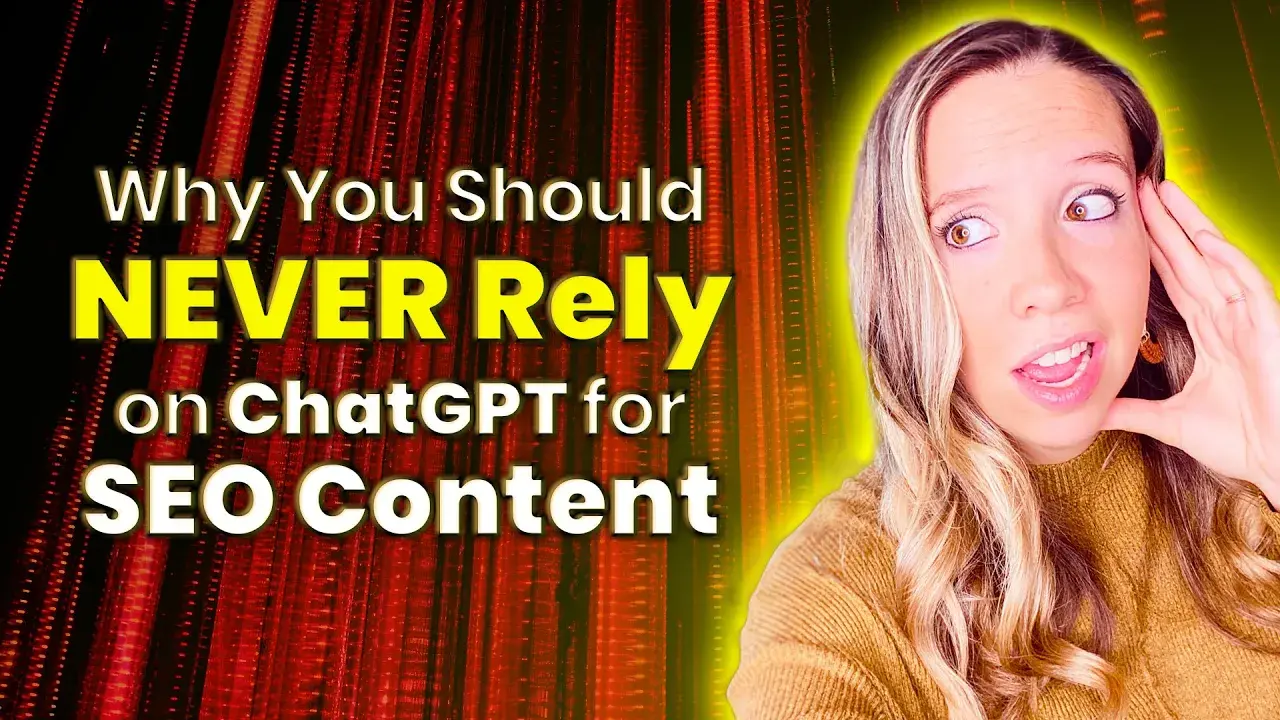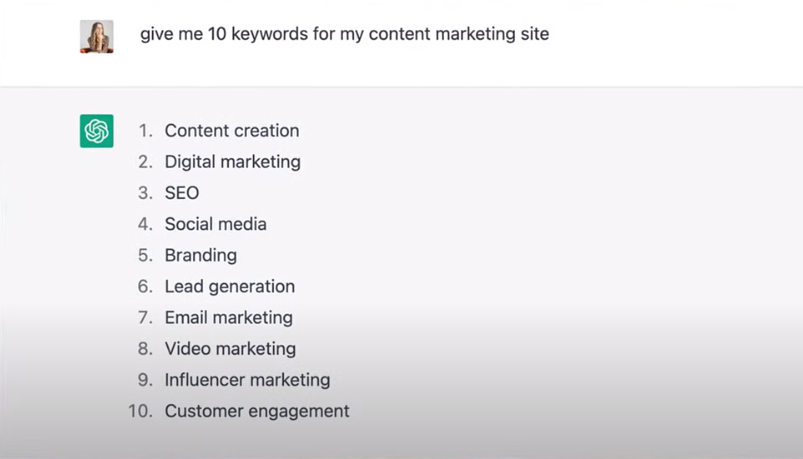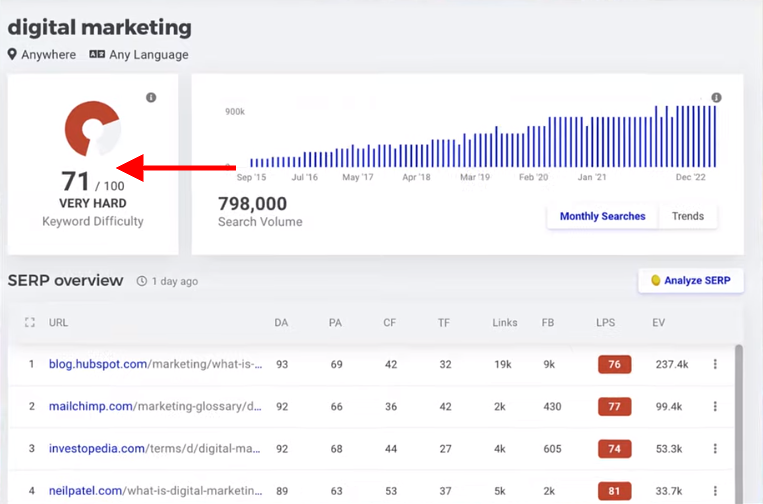Discover top guides, trends, tips and expertise from AIO Writers
Why ChatGPT is Dangerous for SEO & How to Use AI Properly for Blogging
Julia McCoy
Friday, 1st Mar 2024
AI has flipped the SEO blogging world on its head, making content creation faster and more cost-effective. But it’s not all sunshine and rainbows. Relying solely on AI for keyword research can lead you down a rabbit hole of irrelevance and fierce competition.
In this blog post, you’ll learn why blending human intuition with AI insights creates a powerhouse strategy for finding those gold nugget keywords. Plus, discover how tools like BrandWell keep your finger on the pulse of real-time search trends to stay ahead.
AI Can Dramatically Cut the Cost of Content Production
Imagine cutting down content creation time significantly without losing quality. That’s exactly what AI does. It sifts through data at lightning speed, generating insights that would take humans hours to compile. By speeding up content creation, bloggers can quickly supply search engines’ insatiable appetites with new posts, keeping pace in the swift digital race where visibility is directly tied to timeliness.
This efficiency isn’t just about churning out articles; it’s about maintaining a competitive edge in a fast-paced digital world where being first often means being seen.
The majority of our presence at BrandWell is inbound, which means people are finding us. We are attracting ideal clients to our website.
You likely landed on this blog post that way.
That is typically a marketer’s goal whenever they’re creating a blogging campaign.
Using AI to run your content marketing campaign can dramatically speed up the process. We’re talking hours upon hours — not to mention thousands of dollars — in savings. From what we’re hearing from our clients, AI can cut back a minimum of two-thirds of the cost of content production.
With a BrandWell subscription, you’re going to spend as low as a penny per word or less. Compare that to the going rate of SEO content writers and copywriters and you’re saving dramatic bucks in the long run.
But if you’re using AI for blogging, there are some things you need to be aware of specifically when it comes to ChatGPT.
But Not All AIs Are Created Equal …
Did you know that the insights ChatGPT gives you for keyword research and SEO are WAY off in terms of usable, low-competition keywords?
That means you might be going after keywords that pit you against billion-dollar brands – with no chance of ever ranking #1 in Google!
If you’re going to go full force into AI content creation this year, please do not use ChatGPT to generate your articles.
I wouldn’t even use it for keyword research and here’s why.
Why You Should Not Use ChatGPT for Keyword Research
AI models like ChatGPT offer a quick way to get keyword suggestions. But here’s the rub: these insights might not always be in tune with what’s trending or current data.
Unlike BrandWell which has real-time crawlers that scan the top of Google the minute you enter your keyword, ChatGPT is likely just copying and pasting information from an older article. And these insights can lead you astray.
Let me show you how the data doesn’t stack up at all to what you need in terms of good data and good keywords that will rank in Google.
I went into ChatGPT and I asked it to give me 10 keywords for my content marketing site.
These are the lackluster keywords it came up with:

If you were to run any one of these keywords in a keyword research tool, you would see some pretty scary numbers like this:

A keyword difficulty of 71 out of 100!
If you’re going after this keyword, you’re likely up against some of the biggest websites in the world and you’re not going to rank in the Top 3, Top 5, or even Top 10 of Google — unless you too have a billion-dollar company presence.
This scenario puts smaller sites at a disadvantage because they might lack the resources or domain authority that bigger players have.
Contrast this with the keyword I found after doing some human brainstorming about what my clients and customers might want whenever they visit my content marketing site.

That is a huge opportunity!
But you’re not going to get that from ChatGPT and the insights it will give you on keyword ideas.
When it comes to research and strategy, the human process has become even more valuable.
Think about it. When humans brainstorm and research keywords, they bring something unique to the table: creativity and understanding. This blend leads to more valuable and relevant keyword ideas that are not only easier to rank for but also resonate with real people.
This is because we get context. Grasping the subtleties of speech and evolving patterns that a computer program might miss or misconstrue, we navigate through the complexities of language with ease. For example, during certain global events or seasons, specific terms may become suddenly popular or lose relevance quickly — a fact well-known through firsthand experience rather than data alone.
A good illustration of this value is seen when comparing difficulty scores between AI-suggested keywords and those selected through human-led strategies; our choices tend to have lower difficulty scores. Why? Because we’re able to pinpoint gaps that machines can’t see yet — areas ripe for ranking success without battling against every other content creator on highly competitive terms.
So remember, whenever you’re brainstorming ideas for your blog, never rely on ChatGPT or any other tool that’s built on top of the ChatGPT API.
A specialized tool like BrandWell will give you even far better results because, as I mentioned earlier, it crawls Google on the spot. This cutting-edge tool doesn’t just listen; it analyzes too. It arms you with the latest knowledge, enabling you to anticipate shifts instead of merely reacting.
You’re not just getting data; you’re getting an understanding of what people are searching for at this very moment.
Why does this matter? Because timing is everything in SEO blogging. Using keywords that are climbing in popularity can place your content right where readers will find it — before everyone else jumps on the bandwagon.
The beauty of BrandWell lies in its ability to offer these insights swiftly and accurately. Traditional methods might leave gaps or present outdated information by the time they reach you, but with BrandWell, those concerns vanish into thin air.
It’s about efficiency as much as effectiveness: saving hours upon hours that would otherwise be spent sifting through potentially stale data points or missing out on golden opportunities hidden within emerging search terms.
Optimize Your AI-Generated Content in 5 Easy Steps
So let’s say you didn’t copy and paste from ChatGPT and you did real keyword research.
You run that keyword through an AI writing tool and you now have a baseline draft of your blog post.
Then what?
Follow this easy 5-step process to make sure you publish amazing content every time.
Step 1: Cut The Fluff
Cut all the unnecessary words, break up long paragraphs, and make your content read well.
Editing fluff is like decluttering a crowded room — it makes everything more appealing and easier to navigate. Tools like the Hemingway Editor can help keep your blog posts as concise as possible.
By improving clarity and highlighting your main terms, this approach not only improves how easily your content can be absorbed but also guarantees that the essential words capture attention more prominently.
Optimize it as you go and add related keywords so that you have a strong piece of content ready to rank.
If you’re using BrandWell, all you have to do is look at the SEO panel to see all the secondary keywords that could boost the visibility of your content.

Step 2: Fact-Check
A fact-checked blog is a trusted blog. Even though AI can pull from vast amounts of data, you must double-check those facts before hitting publish. Websites like FactCheck.org or Snopes are great places to start if something sounds dubious or too good to be true.
Ensuring accuracy isn’t solely for maintaining credibility. It’s about fostering a bond of trust with your readers, empowering them to confidently share and apply your information in their daily lives.
Always double-check what the AI wrote and make sure that all the claims in your article are factual and up-to-date.
Step 3: Add a Personal Touch
If you have a certain writing style, or your client has a specific brand voice, train your AI to write in the same tone.
If you have an anecdote, a customer testimonial, a case study, or a founder’s success story, share it in your blog post. These personal touches are what will set your content apart, even if it’s 90% written by AI.
Incorporating personal insights into an AI-generated blog post transforms it from generic content into something memorable and relatable. Share experiences relevant to the topic at hand to let readers know there’s a real person behind the screen who understands their challenges or interests.
Step 4: Add CTAs and Links
Make sure all your blog articles have links to the appropriate resources.
Incorporate internal links wisely. They guide visitors through your website, boosting both engagement rates and time spent on site — all beneficial factors for SEO.
External links should open new doors of insight. They show Google you’ve done your homework, ensuring each link adds real substance.
Make sure every CTA offers clear value. What’s your goal for this piece of content? What do you want people to do? Do you want them to subscribe, download something, or book a call? Choose one call to action and place it in a prominent place in your blog post.
Step 5: Add Images
Remember, a picture is worth a thousand words. Fill your blog with visuals like images, screenshots, or infographics to support your written content.
Follow these 5 steps to make sure your AI-written content stands apart, converts, and makes you money in the long run.
It’s Safe to Use AI for Blogging … But Only If You Use It The Right Way
It’s incredible how you can save 8-10 hours per blog post, which agency owners and team leaders are already experiencing as they integrate AI into their content production workflow.
A complete brand growth tool like BrandWell can replace quite a few human writers without sacrificing quality — if you know how to use it properly.
Remember, humans will always be needed, especially in implementing the 5-step process that comes after the AI writes the baseline of your content.
But with AI taking care of the mundane tasks, you can now spend more time on things like data analytics, listening to your customers, and creating even better products instead of doing the grunt work of blogging.

UNLOCK YOUR POTENTIAL
Long Headline that highlights Value Proposition of Lead Magnet
Grab a front row seat to our video masterclasses, interviews, case studies, tutorials, and guides.



